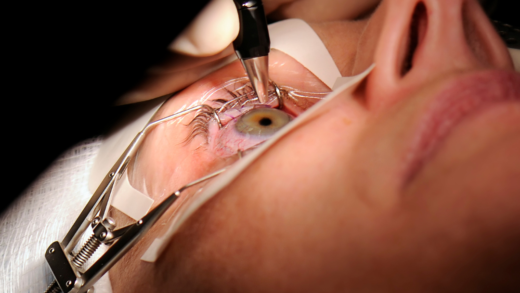Preparing for liposuction involves several considerations regarding the procedure and recovery process. Patients can expect a defined transformation in body contours following surgery, but initial post-operative swelling may obscure results for some time. It’s essential to have realistic expectations about the timeline for seeing the final outcome, as the body requires time to heal and adjust.
The days leading up to the surgery often include medical assessments and a discussion of any pre-operative instructions. After the procedure, patients may experience some discomfort and need to follow specific care routines to ensure proper healing. It’s crucial to recognise that aftercare plays a significant role in the overall success of the procedure.
Understanding the journey before and after liposuction can demystify the experience and prepare individuals for what lies ahead. Being informed helps in making confident decisions and can lead to satisfactory results. Addressing concerns in advance can enhance overall satisfaction with the process and the outcomes.
What to Expect Before Liposuction
Before undergoing liposuction houston or elsewhere, individuals should be well-informed about the initial processes and preparations necessary for a successful outcome. Understanding these aspects can help ease any concerns and ensure readiness for the procedure.
Initial Consultation and Assessment
The initial consultation is a critical component in the liposuction journey. During this meeting, the plastic surgeon will evaluate the patient’s medical history and discuss specific concerns regarding stubborn fat deposits. Common treatment areas include the thighs, arms, and abdomen.
The surgeon will also assess the patient’s overall health, ensuring they are suitable candidates for this cosmetic surgery. Clear communication about goals and expectations is essential. At this stage, individuals may view before-and-after photos of previous patients to gain insight into potential results.
Preparing for Surgery
Preparation for liposuction involves several key steps. Patients may be advised to stop smoking and avoid certain medications, such as blood thinners, in the weeks leading up to the surgery.
Additionally, it is crucial to arrange for postoperative care, including transportation home after the procedure. This surgery may require general or local anaesthesia, depending on the extent of the liposuction treatment.
Maintaining a balanced diet and staying hydrated can help facilitate recovery and improve overall health as the surgery date approaches.
Key Considerations for the Procedure
Several considerations must be taken into account before the liposuction procedure. Understanding the realistic outcomes is vital, as results can vary based on individual body types and the amount of fat removed.
Patients should be aware that liposuction is not a weight-loss method but rather a body contouring technique. It is essential to have a stable weight before the procedure for optimal outcomes.
Potential side effects and risks, such as scarring or complications related to anaesthesia, should also be discussed thoroughly during the consultation to ensure informed decision-making.
During the Liposuction Procedure
The liposuction procedure involves several critical steps that ensure effective fat removal and patient safety. An understanding of the surgical process, the techniques and equipment used, and the anaesthesia administered is essential for those considering this body contouring option.
Understanding the Surgical Process
During liposuction, a plastic surgeon makes small incisions in the targeted areas where unwanted fat is to be removed. These incisions are typically located in discreet places to minimise scarring. After making the incisions, a cannula, which is a thin, hollow tube, is inserted into the fat layer beneath the skin. The cannula is moved in a back-and-forth motion to break up fat cells, which are then suctioned out through the tube. This process allows for precise fat removal while maintaining the integrity of surrounding tissues.
When considering such a significant body contouring procedure, the expertise of the surgeon is paramount. A highly skilled practitioner will not only be proficient in various advanced techniques, including tumescent liposuction, but also possess an artistic eye to sculpt the body for the most harmonious and natural-looking outcome.
For those seeking exceptional results and a personalized approach, finding a board-certified plastic surgeon with extensive experience is crucial. Patients often find peace of mind and achieve their desired aesthetic goals by choosing a reputable specialist for liposuction in houston (or another local area). Their track record, patient testimonials, and before-and-after galleries can provide valuable insight into their capabilities.
Techniques and Equipment Used
Various techniques may be employed during liposuction to enhance results. The most common include tumescent liposuction, where a solution containing anaesthetic and adrenaline is injected into the fat. This helps to numb the area and reduce bleeding. Another technique is laser-assisted liposuction, which uses laser energy to liquefy fat before suctioning, making the fat easier to remove.
Equipment such as power-assisted liposuction devices allows for more efficient fat removal by utilising vibration to facilitate the movement of the cannula. The effectiveness of the treatment can depend on the use of these techniques and advanced tools. As such, individuals typically tend to consult professionals who are known to provide the Best liposuction philadelphia (or elsewhere) for better results.
Anaesthesia and Patient Safety
Anaesthesia plays a vital role in ensuring a comfortable experience during liposuction. Depending on the extent of fat removal and patient preference, local or general anaesthesia may be used. Local anaesthesia targets only the site of the procedure, while general anaesthesia induces complete unconsciousness.
Throughout the surgery, patient safety is a top priority. Vital signs are continuously monitored using specialised equipment to ensure stability and respond to any changes immediately. However, successful outcomes depend not only on the procedure itself but also on the expertise of the surgical team and the standards maintained by the clinic. This is why it’s essential to choose a licensed and reputable medical facility with qualified professionals.
Opting for an unlicensed or poorly regulated practice can increase the risk of complications and may even lead to cases of medical malpractice. In cases where something does go wrong, whether involving a friend, family member, or future circumstance, legal support from agencies like Martin + Colin P.C. is available. Medical malpractice lawyers can help review the situation, identify negligence, and take appropriate steps to seek justice or compensation. Their guidance can be invaluable in holding healthcare providers accountable and protecting patient rights.
Recovery and Aftercare
After liposuction, proper recovery and aftercare are vital for optimal healing and to minimise complications. Key aspects include managing immediate post-operative symptoms, addressing swelling and bruising, using compression garments, and handling pain during the healing process.
Immediate Post-Operative Experience
Following the procedure, patients typically experience grogginess due to anaesthesia. It is essential for someone to accompany them home for safety. Patients may notice mild discomfort, and slight swelling and bruising can begin on the treated areas.
It is common to have drainage tubes in place for a few days to remove excess fluid. Patients should follow their surgeon’s instructions closely regarding rest and mobility. Gradually increasing activity levels can help speed up healing while avoiding strenuous exercise for at least a few weeks.
Dealing with Swelling and Bruising
Swelling and bruising are expected after liposuction. This response occurs because the body is healing and regulating blood flow. Swelling can peak around the third day post-surgery and should start to improve significantly within a couple of weeks.
To manage swelling, patients are encouraged to elevate the treated areas when resting. Cold compresses can also help reduce swelling and pain. It is crucial to avoid hot baths or saunas during the early recovery period, as heat can exacerbate swelling.
Using Compression Garments
Wearing a compression garment is an essential part of recovery after liposuction. These garments help support the body, reduce swelling, and improve the overall contour of the treated areas. Surgeons typically recommend wearing them for several weeks, especially in the initial healing phase.
Compression garments should fit snugly but not be uncomfortably tight. Patients should ensure they are wearing the right size for optimal effectiveness. Consistent use promotes a smoother and more flattering appearance as the healing progresses.
Managing Pain and Healing
Managing pain is an important aspect of the recovery process. Surgeons often prescribe pain medication for the first few days. Patients should follow dosing instructions carefully to address any discomfort.
Healing times vary, but most patients can return to light activities within a week. Full recovery may take several months. It is important for patients to attend follow-up appointments to monitor healing and address any concerns with their surgeon. Scars from the procedure will fade over time, but proper aftercare is crucial for minimising their appearance.
Long-Term Results and Lifestyle Considerations
Post-liposuction, achieving and maintaining results hinges on a combination of healthy lifestyle choices, understanding potential complications, and recognising how ageing affects body contours. An informed approach to diet and exercise is essential for long-lasting outcomes.
Achieving Final Results
The full benefits of liposuction may take time to manifest. Initial swelling and bruising typically subside within a few weeks, revealing improved body contours. The final results usually become apparent over six months as the body adjusts and stabilises.
Patients should manage expectations; while liposuction reduces targeted fat deposits, it does not prevent weight gain from non-compliance with a healthy lifestyle. Thus, maintaining weight is crucial for preserving results long-term.
Diet, Exercise, and Maintenance
A solid commitment to diet and exercise is vital for retaining results post-liposuction. Adopting a healthy diet rich in fruits, vegetables, lean proteins, and whole grains fosters weight stability.
Regular physical activity helps maintain muscle tone and a healthy metabolism. Engaging in at least 150 minutes of moderate exercise weekly can prevent fat accumulation.
Creating a balanced routine that includes strength training can enhance body contouring, complementing the improvements from liposuction. Without these lifestyle modifications, fat can reaccumulate in untreated areas.
Potential Complications and Risks
While liposuction is generally safe, being aware of possible complications is crucial. Risks include infection, seromas, and uneven contours. Some patients may experience loose skin after fat removal, particularly if they had significant weight fluctuations prior.
In rare cases, patients might have adverse reactions to anaesthesia. Consulting with a qualified surgeon and discussing any concerns before the procedure can mitigate these risks.
Longevity of Outcomes and Ageing Effects
The results of liposuction are considered permanent in the areas treated, provided the patient maintains a stable weight. However, the natural ageing process can alter body shape over time.
As skin loses elasticity with age, individuals may notice sagging or changes in skin texture, which cannot be addressed through liposuction alone. Regular skin care and potential interventions, such as skin tightening procedures, may be necessary to manage these changes effectively.
Understanding these factors enables patients to make informed decisions about their liposuction journey and maintain their desired body contours over time.





